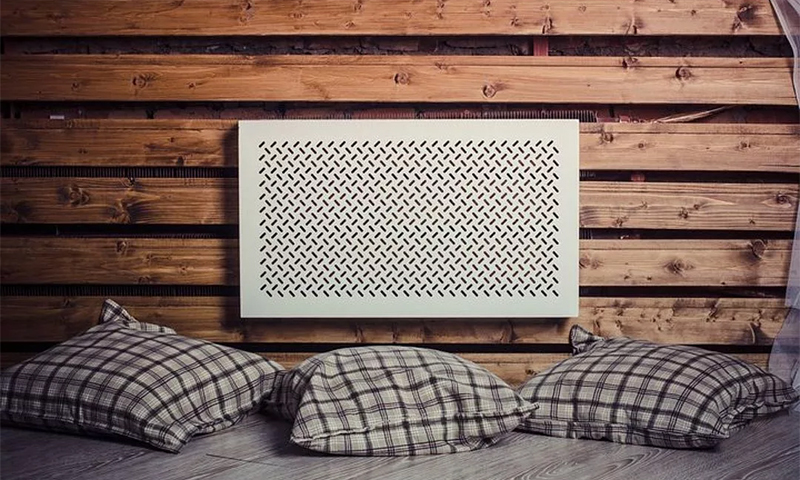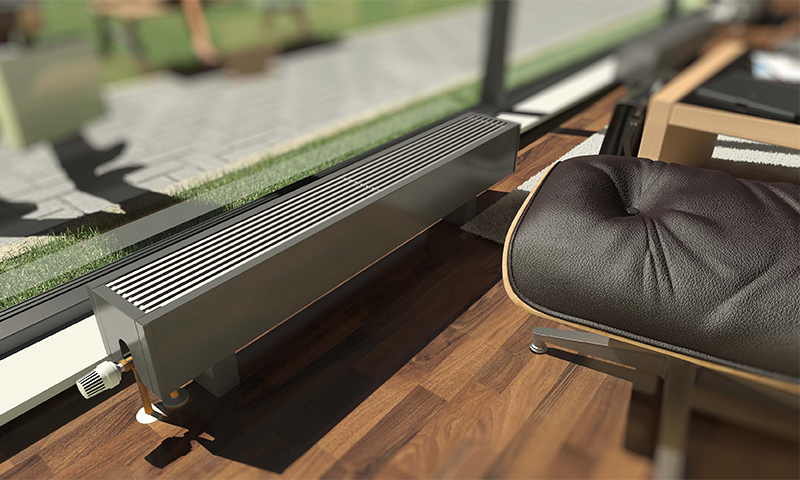The fan heater is useful not only in the frosty winter, when the main heating does not cope with the heating of rooms, but also in the off-season. This is a compact and relatively inexpensive equipment that allows you to quickly raise the temperature of the air in an apartment to a comfortable level or to warm up yourself, say, in a cold garage. Such a device can be used to dry the bathroom or to maintain the "plus" in the country, where you come only on weekends. In general, in any home a fan heater can be found worthy of use - it remains only to choose the appropriate model.

Content:
The best manufacturers of fan heaters - which company to choose
By the time of cold weather, all home appliances stores are literally inundated with various models of fan heaters - from compact and inexpensive “wind blowers” to powerful industrial systems.
Popular brands offer better and more reliable models, Chinese counterparts from little-known firms are more attracted by their affordability, but their service life remains in doubt.
When choosing climate technology, give preference to proven brands - even their high cost will not be a disadvantage, because they will work for more than one season. In addition, remember that in low-cost devices are used not the highest quality materials, which under the influence of high temperature can emit harmful substances into the air.
Good thermal fans can be found in the range of companies:
- Dyson;
- Timberk;
- Polaris;
- Redmond;
- Stiebel Eltron.
In the article you will find detailed review of the best models from these and several other worthy firms. Just do not forget before buying a heater to familiarize yourself with the main criteria for the selection of fan heaters, so as not to freeze in winter.
The principle of operation and the device fan heater
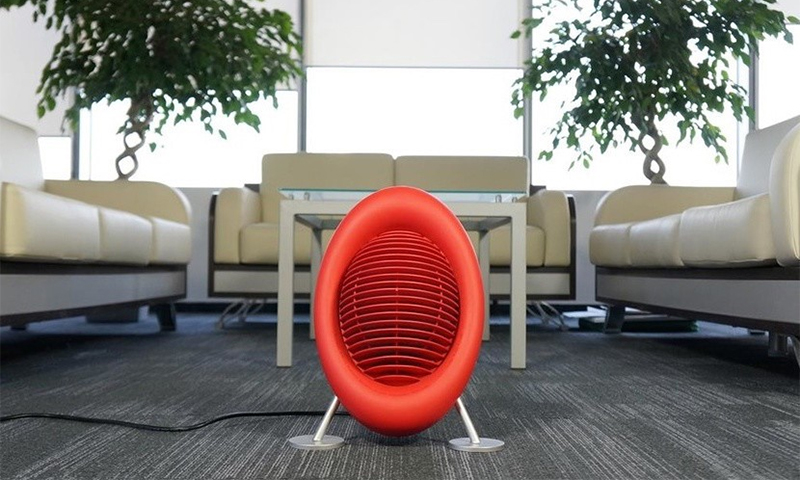
There is nothing difficult in the construction of a “wind blower” - this is an ordinary fan, only it blows the heating element built into the case, quickly dispersing the heated air around the room.
For a free exit of a hot stream and simultaneous protection of a heating element such devices are equipped with the metal grid or a plastic lattice. When operating a fan heater, you need to make sure that it is constantly open, otherwise the unit will overheat and fail.
Inside the appliance is also a built-in thermostat that turns off the device when it reaches the set temperature. Cheap models are often limited to this. More advanced technology allows you to adjust the heating, air flow rate and even the direction of airflow due to the pivotal blinds or the built-in mechanism in the housing itself.
Types of fan heaters
Stationary

The list of stationary devices contains all built-in and mounted models of fan heaters. Many of them look like air conditioners, have 3-4 power levels and are controlled using the remote control or manually from the buttons on the body.
Also here it is possible to regulate the direction of air flow. In the summer period, stationary devices are also not idle, but are used with the heater turned off as an ordinary fan.
Pros:
- High performance;
- Even the spacious rooms heat up quickly;
- The presence of additional functions, such as a timer or air ionizer;
- A wide range of settings;
- Ability to work with the remote control;
- Low noise.
Minuses:
- Cannot be moved to another room;
- Large dimensions;
- High power consumption (from 2 to 9 kW).
Portable
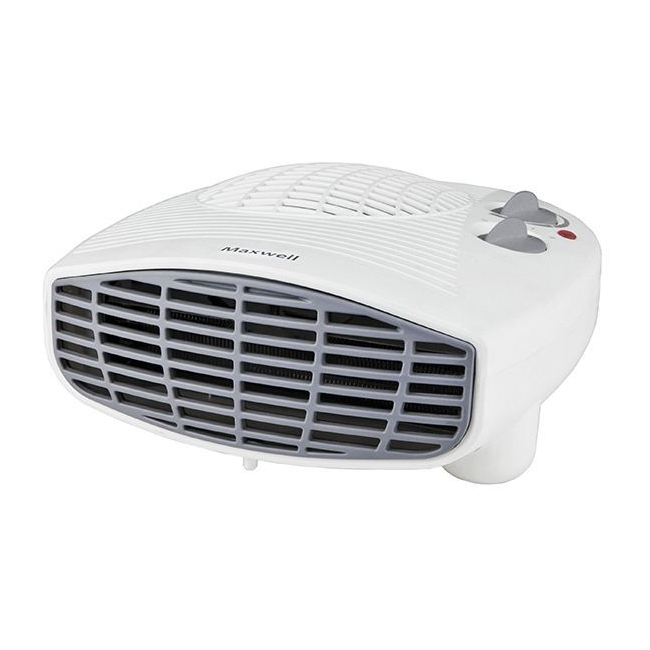
Table and floor heaters are distinguished by their compact size and mobility. This is an ideal option for organizing auxiliary heating in homes, offices, garages and any small premises.
They can simply be placed next to them on the bedside table, placed under the table or in the free corner of the room. Many portable fan heaters (with the exception of desktop models) can rotate around its axis by 70 °, uniformly heating the air throughout the room.
Pros:
- Small size and quite lifting weight (up to 1.5 kg);
- Extremely simple operation;
- Low power consumption;
- There are models with dust filters;
- Very affordable price.
Minuses:
- There is a risk of tilting of the lung device
- Low-cost models are noisy and are not always equipped with a power regulator;
- Spiral fan heaters burn dust accumulated on them, which is why an unpleasant burning smell appears.
Heater selection options

Type of heating element
Air temperature and service life of fan heaters directly depend on the features of the heating elements installed inside:
1. Tubular (TEH)
These are rarely mounted in home appliances - because of their high cost, they are more common in industrial space heaters. Heater is a metal tube with a conductive core.
Quartz sand is poured between the wire and the sheath, which evenly distributes heat from the resistance over the entire surface of the tube. The maximum temperature of heating elements can reach +500 ° С. Such heaters are more durable and safer than spiral heaters, they have good power (up to 2500 W), but their cost is higher.
2. Spiral
Here, the function of the air heater is assumed by the nichrome spiral wound around the ceramic base. The absence of a protective shell is a serious disadvantage, because such a design increases the fire hazard of the device.
In addition, during the downtime of the heater, dust accumulates on the wire, which burns out and gives off an unpleasant odor when it is first turned on. And getting larger debris inside and at all can lead to a fire.
Spiral resistances are installed in cheap mobile fan heaters, so when you buy a budget device you should check the presence of at least a fine metal mesh to protect the wire.
3. Ceramic
It uses a porous plate of extruded kaolin powder, red-hot to a temperature of +150 ° C.
When the thermo-fan is turned on, the air is forced through its pores, gradually heating up, but it gets warmer in the room itself rather quickly, since the plate area is larger than that of the spiral or the heating element.
Such devices are considered the safest, therefore, ceramics are widely used in the manufacture of portable floor models.
4. Cermet
These heaters are cheaper than ceramics in production, but are also considered a good choice. The temperature of the plates here reaches +120 ° C, so that they do not burn out oxygen, which means that they can safely be used in living rooms and rooms with a large crowd of people.
However, sometimes unscrupulous manufacturers under this sauce serve all the same nichrome wire, only inside the ceramic tube. Such heaters have no advantages over plate ones.
Fan type
For blowing hot air in such devices use fans with metal or plastic blades. However, it is not the material that is important here, but the type of execution of the mechanism.
Compact axial fans are installed in compact portable devices - small, inexpensive, but very noisy.
In the case of larger embedded technology, it is already possible to use tangential mechanisms with 2-3 dozen parallel blades. They are more powerful and more productive than axial ones, moreover, they work in a quieter mode.
Power
When calculating the heating power, it is customary to use a simple formula: 100 watts per square meter of floor space.
Fan heaters often come as auxiliary devices, if the main system for one reason or another does not cope with the heating of the room. Therefore, it would be better to do the calculation of the total power of radiators and wind turbines, thereby reducing the cost of electricity, and along with the load on the network.
However, life shows that thermal fans usually have to be used when the heating system does not work at all. If this happens to you in the winter, it is better to take a device capable of independently ensuring sufficient heating of the room.
Power should be selected at the rate of 1 kW per 10 sq. Km. square meters with a standard ceiling height of not more than 2.75-2.8 cm. For auxiliary heating, you can reduce the heat output of the fan by about half.
Body material
Here the choice is not rich - either plastic or metal. The steel case is good because even if the device is accidentally dropped, it will not crack or fall apart. However, such a shell itself will quickly heat up, threatening others with possible burns. With plastic, a similar problem will not arise - if it is really a durable and heat-resistant polymer.
The case of the fan heater can also have additional moisture protection - this will allow you to safely use the appliance in the bathroom.
Type of control and available modes
The fan heater control system can be mechanical or electronic. The first is simpler and more reliable, the second is “smarter” and is able to work with the remote control. It does not have any other advantages over mechanics, since the functionality of a vetroduev is not rich from the start.
In advanced models, very useful options can be implemented:
1. Switching modes of operation - on the heater, you can set a certain temperature and power blowing. In the summer, such a heater turns into an ordinary fan by simply disconnecting the heating element.
2. Timer - allows you to set the on / off time of the device.
3. Air ionization will create a more comfortable and healthy microclimate in a closed room.
4. Frost protection is a useful feature for the dacha appliance if you leave the country house for a long time in winter. The vetrodychik will switch on independently, charging up the positive temperature in the room (up to +5 .. + 8 ° С) so that the room does not stand out completely.
For floor models, it is also important to have a position sensor. He will immediately turn off the appliance if it overturns. However, in most fan heaters, this function is implemented ridiculously primitively: at the bottom of the case there is a recessed button, which opens the circuit, it is only necessary to raise the unit above the floor. But even such a precaution is better than nothing.
Also in the high-temperature device there should be an automatic protection against overheating - it will ensure a long service life of the fan if the thermostat fails or something falls on the air intake grille.
Which fan heater to choose
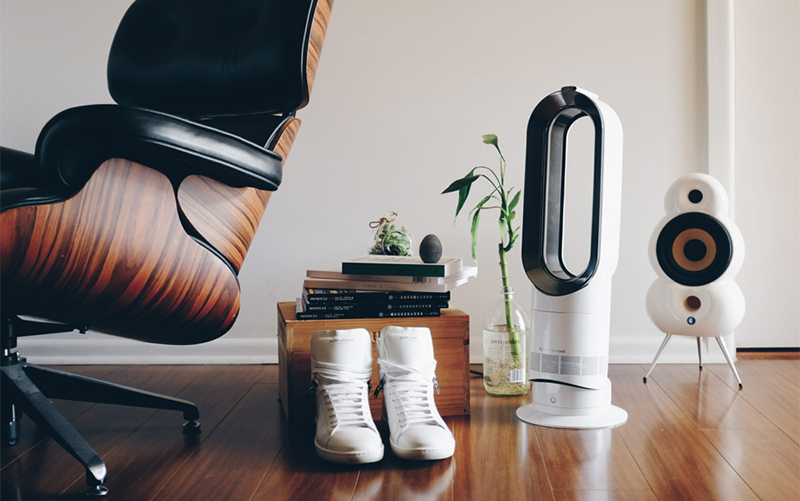
1. For personal use, in order to quickly warm up in a poorly heated office, the smallest and most compact 400-500 W portable fan heater with a ceramic or metal-ceramic plate suffices. You will keep it directly next to you, so take the device in a plastic case so as not to accidentally burn yourself.
2. In a small bedroom or children's area up to 10 square meters. m enough kilowatt device. Safety requirements are the same: non-heated plastic case and ceramic plate inside.
3. When organizing a permanent apartment heating, it is better to use a floor column heater with a tangential fan, so that its noise would not disturb anyone. Power is selected in accordance with the floor space. Well, if the device has the function of rotation and ionization of air, as well as the mandatory protection against overturning.
4. In spacious houses and studio apartments, stationary ceiling or wall-mounted fan heaters are installed. The devices must have sufficient power, be able to change the direction and intensity of the air flow, as well as be controlled from the console.
5. In the bathroom or bathroom just put the fan up to 1 kW. The main thing that he had a sealed plastic case and a mark of moisture protection.
6. It is better to buy a floor fan with a good power reserve and protection against freezing at the dacha or in a house where no one lives in the winter. In the mode of maintaining a positive temperature, its energy consumption will be small, but on arrival you can quickly heat up the room. Those who are just late returning home will also need a timer with a delayed start - then by your arrival the veterinarian will have time to create comfortable conditions in the room.
How much is the fan heater
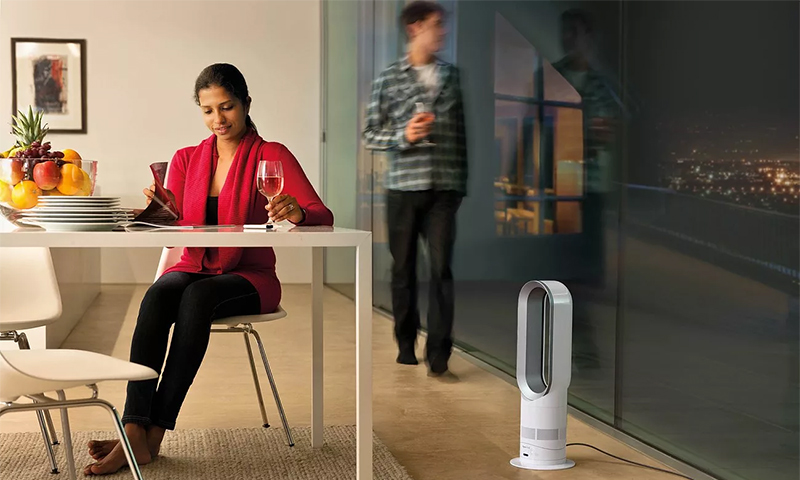
1. The simplest portable fan heater with a spiral heater can be bought for 400-1200 rubles.
2. The desktop model with heating elements will cost about 700-1500 rubles, and a more powerful unit for heating industrial premises will draw 7-10 thousand.
3. The family of ceramic floor vetroduev is the most extensive - among them are both low-cost devices in the range of 500-900 rubles, and powerful functional models for 4-5 thousand.
4. Fan heaters for wall and ceiling mounting are much more expensive - from 1.5 to 25 thousand rubles.
It will be interesting to friends too



